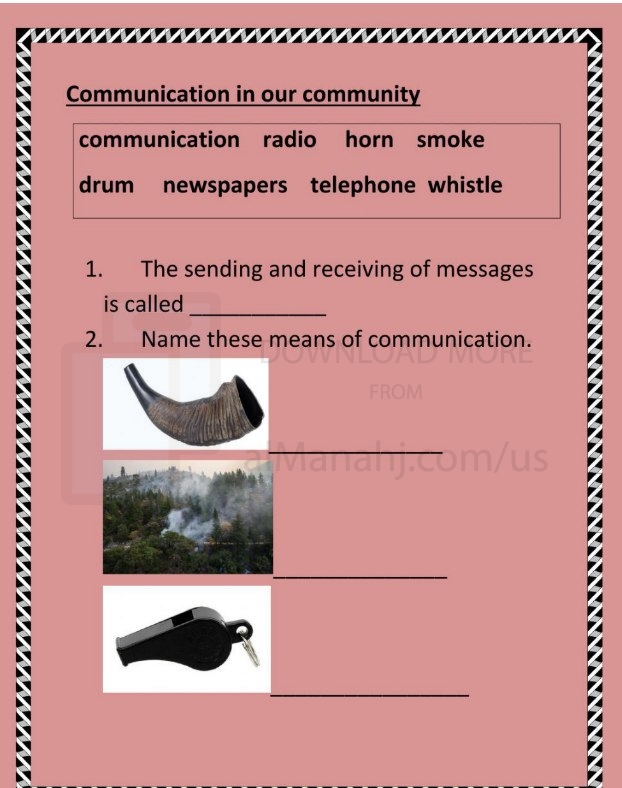| You are here: Almanahj Website ⇒ American curriculum ⇒ 10th Grade ⇒ Information and comm ⇒ Term 1 | ||
|---|---|---|
Worksheet about means of communication | ||
|---|---|---|
| Subject: Information and comm | ||
| 10th Grade | ||
| Term 1 | ||
| Year: 2023/2024 | ||
| Size: 322KB | ||
| Number of clicks: 92 | ||
| Publish date:November 15, 2023 | ||
| Added by: Eman | ||
| Last download date: 2024-08-30 05:05:06 | ||
| Updated by: Eman9966 on 2023-11-15 17:28:35 | By: theodor ZALWANGO WINIFRED | |
| File info: Means of communication refer to the tools and methods used to convey information between two or more individuals. They encompass a wide range of options, from traditional verbal and nonverbal communication to modern digital and technological advancements. Traditional Means of Communication: Verbal Communication: This involves spoken words as the primary means of transmitting information. It includes face-to-face conversations, telephone calls, video chats, and voice messages. Verbal communication allows for immediate feedback and clarification, facilitating a dynamic exchange of ideas. Nonverbal Communication: This encompasses body language, facial expressions, tone of voice, and other nonverbal cues to convey messages. Nonverbal communication can be intentional or unintentional, adding layers of meaning and nuance to interactions. Written Communication: This involves the use of written words to convey information. It includes letters, emails, memos, reports, books, and other written forms. Written communication provides a permanent record of the message, allowing for careful consideration and future reference. Visual Communication: This utilizes images, graphics, charts, diagrams, and other visual elements to convey information. Visual communication can effectively summarize complex ideas, capture emotions, and create a sense of atmosphere. Modern Means of Communication: Electronic Communication: This encompasses a range of digital tools for transmitting information, including emails, instant messaging, social media platforms, and online forums. Electronic communication facilitates rapid and convenient exchange of messages, regardless of geographical distance. Technology-mediated Communication: This involves the use of technology to enhance communication, such as video conferencing, webinars, and virtual meetings. Technology-mediated communication allows for real-time interaction and collaboration, even in remote settings. Mobile Communication: This refers to the use of mobile devices, such as smartphones and tablets, to send and receive information. Mobile communication provides constant connectivity and allows for communication on the go. Global Communication: This involves the exchange of information across international borders, facilitated by advancements in technology and infrastructure. Global communication promotes cultural understanding, fosters collaboration, and enables businesses to operate on a global scale. Mass Communication: This involves the transmission of information to a large audience through media channels such as television, radio, newspapers, and the internet. Mass communication has the power to inform, educate, and influence public opinion. The choice of means of communication depends on various factors, including the purpose of the communication, the audience, the context, and the available resources. Effective communication requires selecting the most appropriate method to convey the message clearly, concisely, and accurately. In today's interconnected world, individuals and organizations rely on a diverse range of means of communication to share information, build relationships, and achieve common goals. Understanding the strengths and limitations of each method allows for effective communication strategies that adapt to the ever-evolving landscape of human interaction. | ||
| Downloading link Worksheet about means of communication |
|---|
|
1700043900.pdf
The file is being prepared for download
|
| File images |
|---|
 |